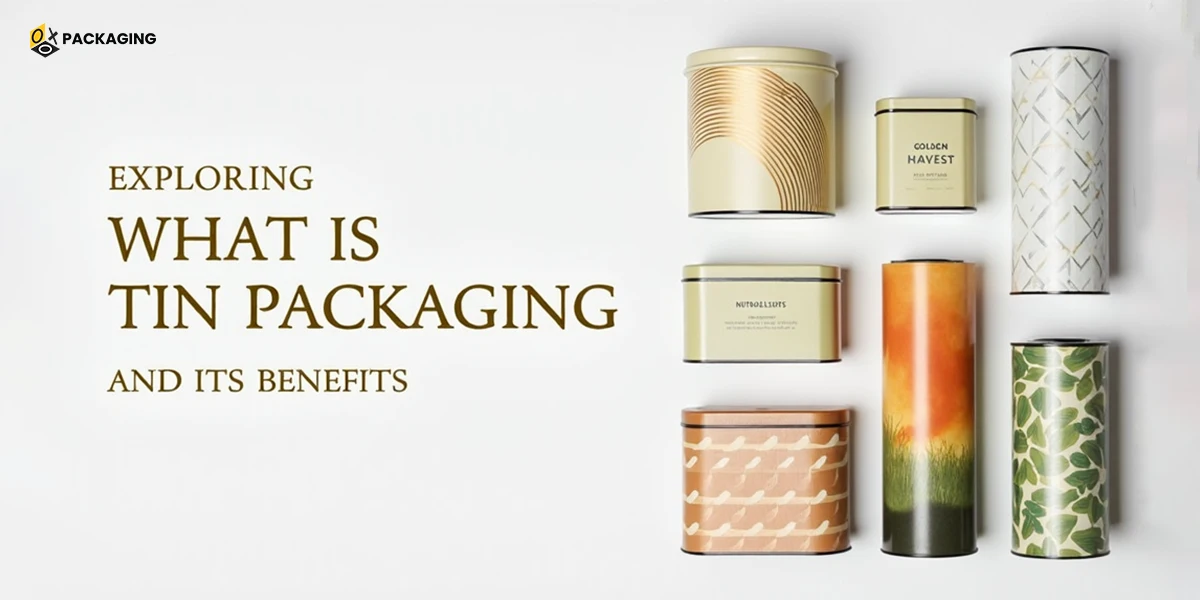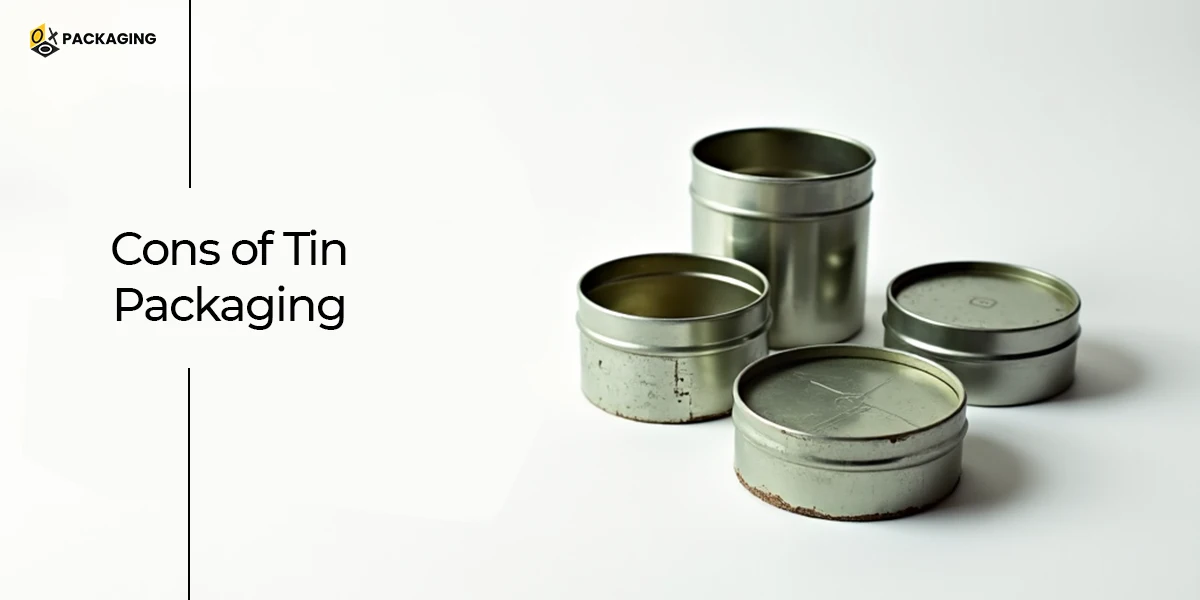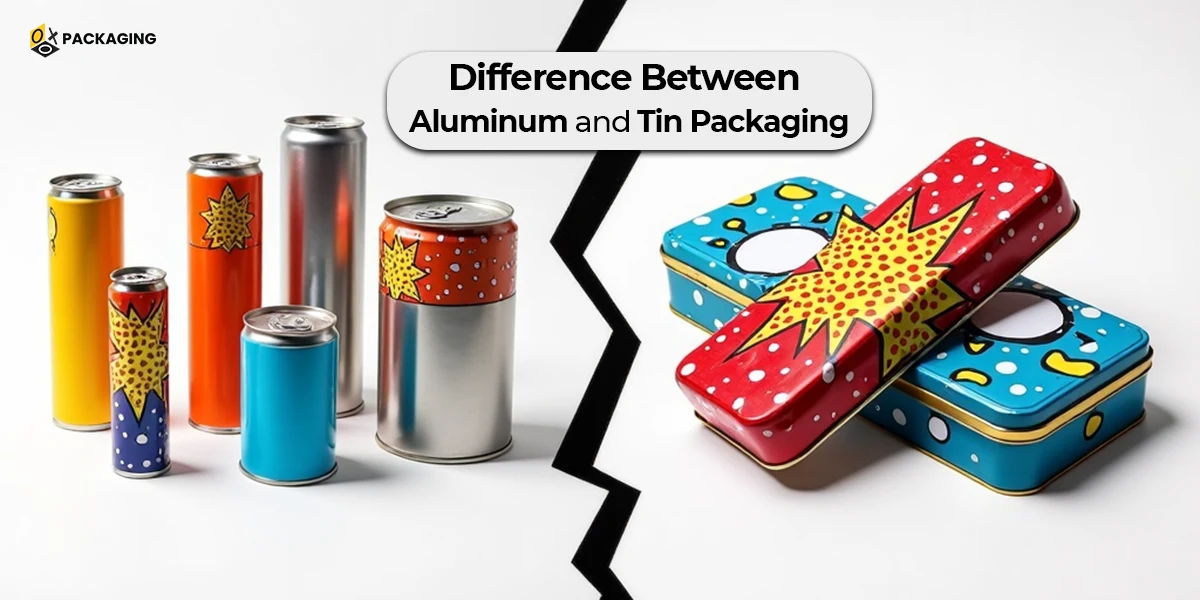Exploring What is Tin Packaging and Its Benefits

The packaging you choose for your products plays a vital role in their prolonged shelf life. Tin packaging is one such packaging that is popular for its protective barrier properties and durability. It is popular for packing food, cosmetics, candles, stationery, medicines, and jewelry items. The best thing about tin packaging is that it can be customized according to your brand and product needs.
Tin containers are made from steel which is coated with tinplate, which ensures long-term preservation of your products. Read this blog to learn what is tin packaging, its benefits and uses, and compare it with aluminum packaging.
Overview of Tin Packaging
Tin packaging is created in the form of containers, which are used for packing, preserving, and shipping various products. It is made from high-quality tinplate-coated steel. The barrier properties of tin packaging keep the products safe from moisture, contamination, oxidation, light, and air. It is also corrosion-resistant and reusable.
Benefits of Tin Packaging

The demand for tin packaging is rising due to its ability to prolong the shelf life of various products, especially food items. Some other benefits mentioned below are also the reason for the higher demand:
-
Versatility
One of the best things about tin container packaging is that it can be used to pack different items. Different industries depend on tin packaging for safety and rightful product preservation. It can be used for primary and secondary packaging. Packaging tins are used for candles, cookies, canned food, jewelry, cosmetics, and medicines.
-
Durability
You can confidently pack, store, and ship your products in tin containers due to their durability. The core steel in the tin packaging can not easily bend or break, which protects the products during shipping and handling. Tinplate has great barrier properties that protect products from contamination, oxidation, air, and light.
-
Reusability
Tin packaging could align with your customers’ contemporary preferences because it can be reusable. Customers prefer paying a little extra for products packed in reusable packaging. The rigidity of tinplate-coated steel makes containers reusable for different purposes such as storage.
-
Recyclability
The right packaging not only aligns with your business interest but also with customers’ preferences. One such preference is eco-friendly packaging. Tin packaging can be eco-friendly because it is highly recyclable. You can run environmentally friendly campaigns by encouraging your customers to give back to you the empty tin containers for recyclability.
-
Customizability
Your product packaging is the visual representation of your brand. Tin packaging supports customizability, which helps you print your brand logo, name, product information, and other relevant information for improved branding. Offset printing is good for printing tin cans and containers.
-
Corrosion Resistant
Tin has corrosion-resistant properties, which keep the packaging safe for the long term. It prevents rust that can damage the packaging and product inside. This is one of the reasons that tin containers can be reused for so many years even after the product is finished.
Cons of Tin Packaging

Like any other thing, tin packaging has some boon and some bane. The following are some cons of tin packaging:
-
Higher Cost
Tin containers are quite more costly than aluminum or any other packaging. The reason is higher raw materials and manufacturing costs. If you are a small business with a limited budget, tin packaging sometimes becomes inaccessible.
-
Higher Shipping Charges
Tin packaging can be costly if you keep shipping your products over long distances. The reason is that it is heavier than paper or aluminum packaging. Heavier packaging weight will cause higher shipping charges.
Uses of Tin Packaging
Custom tin containers are used for branding purposes. They are also used as promotional gifts by businesses to their customers. Different industries use tin cans, jars, bottles, and containers to preserve their products for extended shelf life. Canned food businesses are completely relying on high-quality tin packaging. Luxury gifts are also packed in tin packaging to improve products’ aesthetic appeal and perceived value.
Some major industries that use tins are listed below:
- Food
- Gifting
- Cosmetic
- Jewelry
- Household
- Pharmaceutical
- Toys & Stationary
Is Tin Packaging Eco-Friendly?
Yes, tin packaging can be eco-friendly if recycled responsibly. However, tin containers cannot biodegrade on their own. They can only be recycled or reused to reduce landfill waste. You can also run Go Green mission campaigns to protect the environment by collecting used tin containers from your customers and recycling them ethically.
Difference Between Aluminum and Tin Packaging

Some people confuse tin packaging with aluminum. They are completely different types. Let’s discuss the core differences between tin and aluminum packaging:
-
Cost
Tin packaging is more costly than aluminum packaging because its raw materials and manufacturing costs are higher.
-
Weight
Aluminum packaging is more lightweight than tin packaging. The heavier weight of tin packaging results in higher shipping costs for products packed in it.
-
Strength
Aluminum packaging can easily be bent due to its lightweight nature. However, tin packaging is sturdier and cannot break or bend easily. Tin is stronger than aluminum.
-
Recyclability
Both can be recycled many times. Aluminum is best for recycling as it can be recycled repeatedly without affecting the quality. It can also be used as a foil for wrapping food. However, tin recycling requires more energy.
-
Corrosion Resistant
Aluminum is naturally corrosion-resistant. However, tin packaging is coated with tinplates to prevent corrosion. Both can be reused but tin packaging lasts longer than aluminum.
Conclusion!
Tin packaging is popular because it has immense significance in different industries. The use of tinplate-coated steel for making tin packaging makes it corrosion-resistant, which leads to its reusability. It protects your product from internal and external damage due to its barrier properties and strength. The shiny surface and customisation detailing make tin packaging visually appealing and add a premium touch. Invest in tin packaging and experience the difference in your products’ longevity and business growth!




